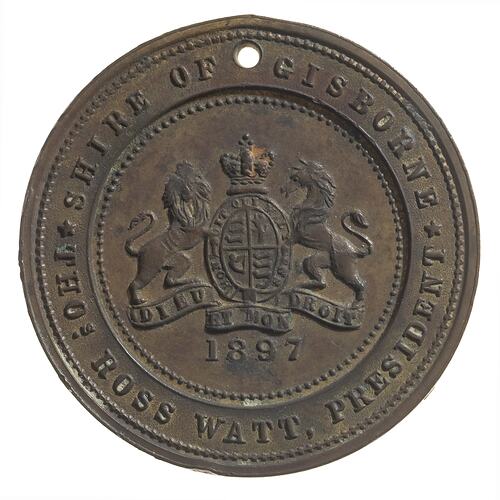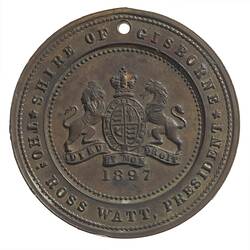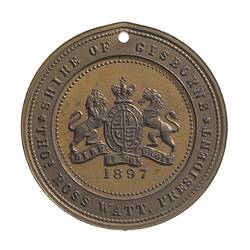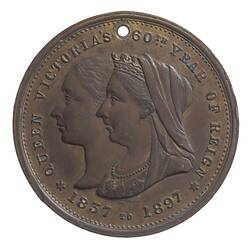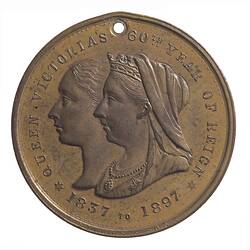Gisborne is located 54 km north-west of Melbourne and 610 metres above sea-level. Prior to European settlement the area was occupied by the Woiwurung people. The first European settlers were pastoralists who took up runs circa 1836. Henry Fyshe Gisborne, Victorian Crown Lands Commissioner and an immigrant from Derbyshire, England, took up a station in the area in 1840, but died the following year. A hotel was constructed in the area in 1850 (now Macedon House). Gisborne existed as a municipality from 1871 to 1995.
Goldrushes at Castlemaine and Bendigo from 1851 saw prospectors resting overnight at 'Bush Inn' before traversing the potentially dangerous Black Forest in the daylight. In one week in 1851, over one ton of gold was conveyed through Macedon and Gisborne on route to Melbourne.
The nascent settlement was surveyed in 1851 and named after Gisborne. In 1854 Caroline Chisholm began her campaign to provide cheap and safe accommodation for families of prospectors, as well as newly-arrived immigrants, along the track to the goldfields. In April 1855 tenders for the erection of ten 'Shelter Sheds' or 'Protection Posts' were sought in the Government Gazette at locations including Gisborne, the Black Forest, Woodend and Carlsruhe.
Gisborne flourished during the 1850s. It soon boasted a brewery, two wine saloons, eight hotels, grocery, grain and hay stores, harness makers, blacksmiths, butchers' shops and many cottages and tents. Housing developments included the substantial brick house, 'Elderslie,' built for Thomas Ferrier Hamilton in the early 1850s in New Gisborne. In 1858 a two-storey rendered courthuse and police station with a whipped slate roof and flanking lower wings was built. Brick stables and bluestone lock-up built were added in 1861.
Gisborne had 13 hotels and many retail stores by 1860, when it was declared a district. The following year the railway to Melbourne opened. Three years later Scottish-born immigrants Thomas Watson and Agnes Cunningham purchased Gisborne Mains Farm. Thomas was a skilled horsebreeder who imported stud stock from New Zealand. The farm achieved a level of affluence uncommon to farmers in the Gisborne district at the time.
Gisborne was declared a shire on 24 February 1871. In 1897 it issued a medal to commemorate the jubilee of Queen Victoria [NU 20444], as did many other shire councils.
Gisborne was the first shire in Victoria to have a female Shire President, Blanche Ross-Watt. She is remembered for instigating Wattle Day in Victoria with her daughter Betty when, in 1912, they handed out sprigs of wattle in Melbourne suburbs to raise funds to build a branch of the Church of England in New Gisborne. In that first year, they raised £3000. Blanche Ross-Watt also formed the Gisborne Red Cross Branch, within a few days of the outbreak of World War One.
On 19 January 1995 the Shires of Gisborne, Romsey and Newham and Woodend, part of the Shire of Kyneton united to form the Macedon Ranges Shire Council.
Today Gisborne is a satellite region of Melbourne, connected by freeway to the city.
References:
Fairfax Walkabout website http://www.walkabout.com.au/locations/VICGisborne.shtml, accessed 09/12/2003.
Blake, L. (1977). Place Names of Victoria.
Keilor Historical Society http://home.vicnet.net.au/~khis/pointsofinterest.html, accessed 09/12/2003
National Trust (Victoria) website http://www.nattrust.com.au//register/viewreg.cfm?register_id=12264, accessed 09/12/2003.
Gisborne and Mecedon Districts Historical Society website http://www.gisbornemountmacedon.org.au/history.htm, accessed 09/12/2003.
More Information
-
Keywords
-
Localities
-
Authors
-
Article types
